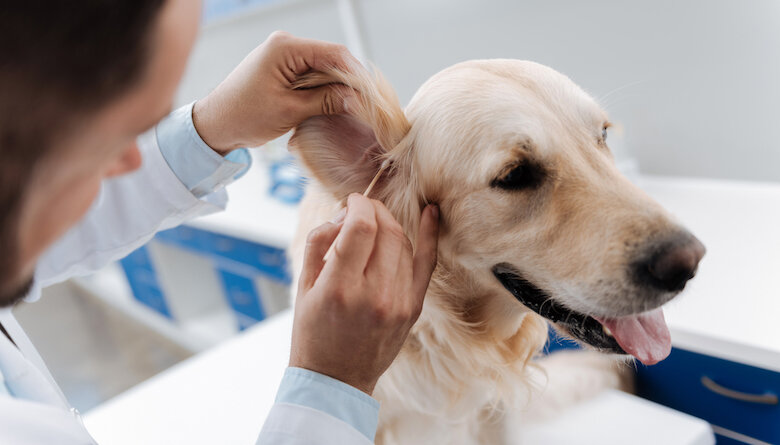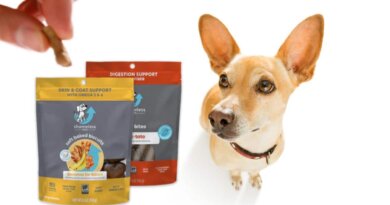What to do if Your Dog Needs Vet Care During the Coronavirus Pandemic
Nothing about the world right now feels like business as usual, and unfortunately, this is true about accessing vet care for our dogs. This week my 3-year-old Newfoundland started acting strange, she was grumpy, and asked to go outside to go potty, again, and again. I knew immediately she had a Urinary Tract Infection (UTI). In a panic, I called our local vet and was relieved that they were open and could get her in for an appointment the same day, but it was an appointment, unlike any vet appointment I’ve ever taken a dog to.
Is vet care an essential service?
Amidst the COVID-19 pandemic, many businesses not deemed “essential services” have temporarily closed. The American Veterinary Medical Association is actively working to “urge lawmakers and state executives to protect and preserve public health and ensure that veterinary practices are clearly stated to be “essential businesses” and thereby allowed to continue to provide critical services in our communities.”
Related: These Vets Make House Calls
But not all vet clinics have been able to stay open. Veterinary specialist clinics and some general practice vets are closing or significantly reducing hours for the safety of staff and patients. Even if your dog doesn’t need immediate veterinary care it’s a good idea to follow your local vet clinics and emergency hospitals on social media. Many clinics are posting changes in hours as the COVID-19 situation continues to evolve in your local area.

Photo: Getty Images
How to take your dog to the vet during COVID-19 shutdowns
COVID-19 has shifted what vet visits look like for staff, dog parents and most of all for dogs. Like many other guardians, I’ve worked hard to make going to the vet a fun experience for my dogs. We go for short visits to say “hi” to clinic staff, get weighed and eat treats and leave. I always opt my dogs out of “tech appointments” for vaccines where techs will take a dog quickly to the back and instead say we need to be seen in an exam room. We use high-value treats during visits and I work hard to make sure every time my dogs go to the vet, they get treats, toys, play games and have fun. COVID-19 is changing all that.
Dr. Kimberly Hammer Medical Director of NorthStar VETS Emergency, Trauma and Specialty Center is encouraging dog owners to “call or check online to make sure they understand the protocol put in place by the hospital they are visiting.”
My vet clinic’s new policies (which mirrors protocols being used by clinics across the country) involves dogs being met at the curb or in a parking lot by a vet staff member gloved and masked who then will take the dog into the clinic. Guardians are expected to stay in their cars away from our dogs and await a phone call from the vet after the exam takes place. Guardians and the vet will discuss a treatment plan by phone and then your dog will be returned to you by the masked and gloved vet assistant.
These new COVID-19 practices are efficient, and the safest option for us as guardians as well as the vet staff, but they are stressful for dogs. These protocols are like sending a sick toddler alone to meet with the pediatrician. Dr. Hammer advises guardians to “let us know if they think their pet may experience anxiety or fear. If we’ve seen the pet before, we can often prescribe something to help.” Beyond that guardians have to trust vet providers and hope for the best.
Vet clinics are facing shortages
Like human medical providers, vet clinics across the country are seeing the of shortages and concerns about shortages of medical equipment, according to Dr. Hammer. “We are finding that certain items such as masks, rubbing alcohol, surgical gowns are becoming in short supply though we have not run out of anything yet.”
She assured dog guardians that vet clinics are conserving supplies as much as possible and reusing supplies when it is safe to do so. These times call for very hard decisions to be made and some high levels of care that guardians may be used to being an option at vet clinics or emergency hospitals though may no longer be available “We donated our ventilator to the local children’s hospital to use” Dr. Hammer said.

Photography Wavetop | Getty Images
Seek help
I’m not going to lie, watching a gloved technician lead my dog away in the clinic without me was hard, especially as my dog tried to get back into the car and back to me. I was upset, not at the clinic staff or the vets, but frustrated that this was the safest option for me and the vet staff.
While we all hope our dogs won’t need unexpected vet care while the pandemic is happening if they do Dr. Hammer encourages guardians “Don’t hesitate to come in if you think you have an emergency. We are here and want to help.Most of all, bear with us! It’s all new to us too and all of us together are just trying to help care for your pet’s health while staying healthy ourselves during this crisis.”
As stressful as the COVID-19 outbreak is it’s important to remember all of the people on the front lines working hard, including vets, vet technicians, and vet clinic staff. Hopefully, our social distancing will pay off and we can return to life and normal less stressful vet visits soon.
RedRover has created a COVID-19 resource list for pets owners who may need assistance or guidance during this crisis: https://redrover.org/news/coronavirus.
Top photograph: yacobchuk | Getty Images
Read Next: 5 Tips to Keep Your Dog From Distracting You When You’re Working From Home




